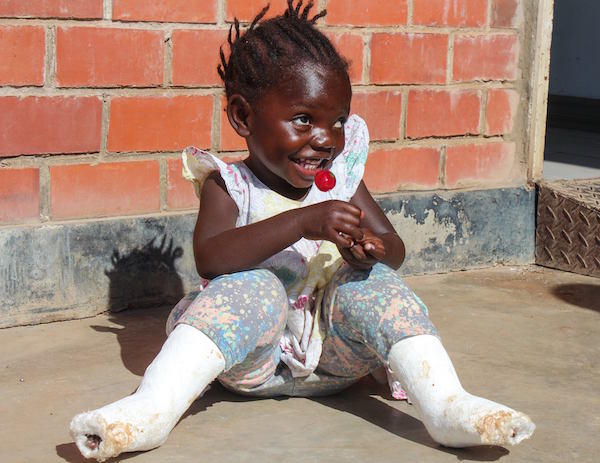CURE Teams With WDI to Expand Clubfoot Treatment
Tuesday, December 5, 2017

A child recovers from clubfoot treatment. Image courtesy of CURE International.
The head of WDI’s Healthcare Initiative recently spent a week in Ethiopia identifying and offering remedies for current challenges faced by the nonprofit charitable organization CURE International and its clubfoot program in that country.
CURE operates clubfoot clinics in 17 countries around the world, each tasked with helping children and families deal with the congenital deformity that twists the foot, making it difficult or impossible to walk. In Ethiopia, CURE manages 37 clinics.
Pascale Leroueil, director of the Healthcare Initiative, traveled to Ethiopia for the project, the first time the initiative has worked in the country. WDI has organized student MBA student teams from the University of Michigan’s Ross School of Business to work with CURE in the past, but in India.
“Cure officials in Ethiopia want to grow their coverage in the next two to five years to cover the entire country with clubfoot care, which is an ambitious goal,” Leroueil said. “So they were looking for some advice and our thoughts on their current challenges.”
Leroueil highlighted three areas of concern, beginning with how the nonprofit’s management reporting structure was organized and who reported to whom. Another focus was ensuring the physiotherapists and surgeons who perform clubfoot procedures are properly trained and remain up-to-date on the latest methods.
The final area highlighted by Leroueil that required attention was CURE’s ability to manufacture foot abduction braces at the scale and quality needed to treat the children with clubfoot.
To treat a child with clubfoot, ideally in the first three months of the child’s life, their affected foot is manipulated and placed in plaster casts for six to eight weeks. Often, the child’s Achilles tendon needs to be severed – an outpatient surgery done under local anesthesia. The foot is then placed in a cast again for about three weeks while the tendon grows back. After that, the feet should be in the correct position. The child will wear foot abduction braces for a few years to maintain the correct positioning of the feet.
Leroueil said a student team comprised of Ross School graduate students will soon tackle the challenge of identifying what is needed at the supply chain and brace manufacturing level for the nonprofit to scale up its coverage countrywide.
Leroueil said she gave CURE managers advice on how to address the other two issues she highlighted, and the nonprofit is deciding how best to resolve them. Leroueil said WDI is ready to assist CURE in the future.
“My hope is that our relationship with CURE will continue to grow, both in terms of student and staff projects,” she said.
